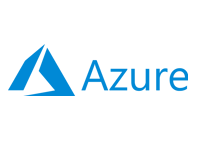3 Steps to Seamless Sky Computing Migration

In today's fast-paced cloud environment, businesses are constantly searching for ways to enhance flexibility, improve efficiency, and reduce reliance on single cloud vendors. That’s where Sky Computing comes in—a groundbreaking approach designed to unlock the true potential of multi-cloud strategies. In this post, we’ll walk you through the 3-step process to migrate your business to Sky Computing, giving you the power to manage your cloud resources on your terms.
Step 1: Establish Your Sky Zone
The first step in your migration is creating what we call the Sky Zone. This
involves deploying the Sky Computing Layer on your existing AWS or Azure cloud
infrastructure. Instead of overhauling or rewriting your existing applications, you
simply deploy a Sky Node, which serves as the entry point into the Sky Computing
ecosystem.
The beauty of this step is that you don't need to touch any application code. The
apps are proxied through the Sky Layer, seamlessly connecting to your underlying AWS
or Azure services. With this setup in place, you've taken the first step towards
unlocking multi-cloud potential.
Step 2: Analyze and Migrate Common Processes
Once the Sky Zone is established, it's time to dive deeper. In this phase, we focus
on the analysis of common processes running within your cloud infrastructure. These
common processes are the ideal candidates for migration to the Sky Computing layer.
Through thorough analysis, we identify processes that can run natively within the
Sky Layer—independent of the specific cloud vendor. Afterward, we craft a detailed
migration plan, coding and moving these processes into the Sky Layer. The goal?
Optimize efficiency, reduce dependence on any single provider, and create a more
resilient and scalable infrastructure.
Step 3: Unify and Expand
The final step in your journey to Sky Computing is unification. Once the common
processes have been successfully migrated, the Sky Computing layer becomes the home
for all your standard services. The only processes left running directly on AWS or
Azure are those that are unique and cannot be moved due to technical or business
constraints. These remain as proxied services within the Sky Zone.
At this point, your migration is complete. With all common processes unified in Sky
Computing, your cloud infrastructure is no longer bound to one vendor. The system is
ready for expansion—whether that means integrating additional cloud vendors to
spread your resources or scaling to meet new demands.
Conclusion: Your Cloud, Your Choice
Migrating to Sky Computing means taking control of your cloud infrastructure, opening the
door to true multi-cloud freedom. By following these three steps—establishing the Sky Zone,
analyzing common processes, and unifying them in the Sky Computing layer—you can transform
how your business operates in the cloud. And once the migration is complete, adding new
cloud vendors is a breeze, giving you unparalleled flexibility and scalability.
Ready to begin your Sky Computing journey? Contact us today to see how we can help you make
the leap!
xcware Strategic Partners





 Follow
us
Follow
us